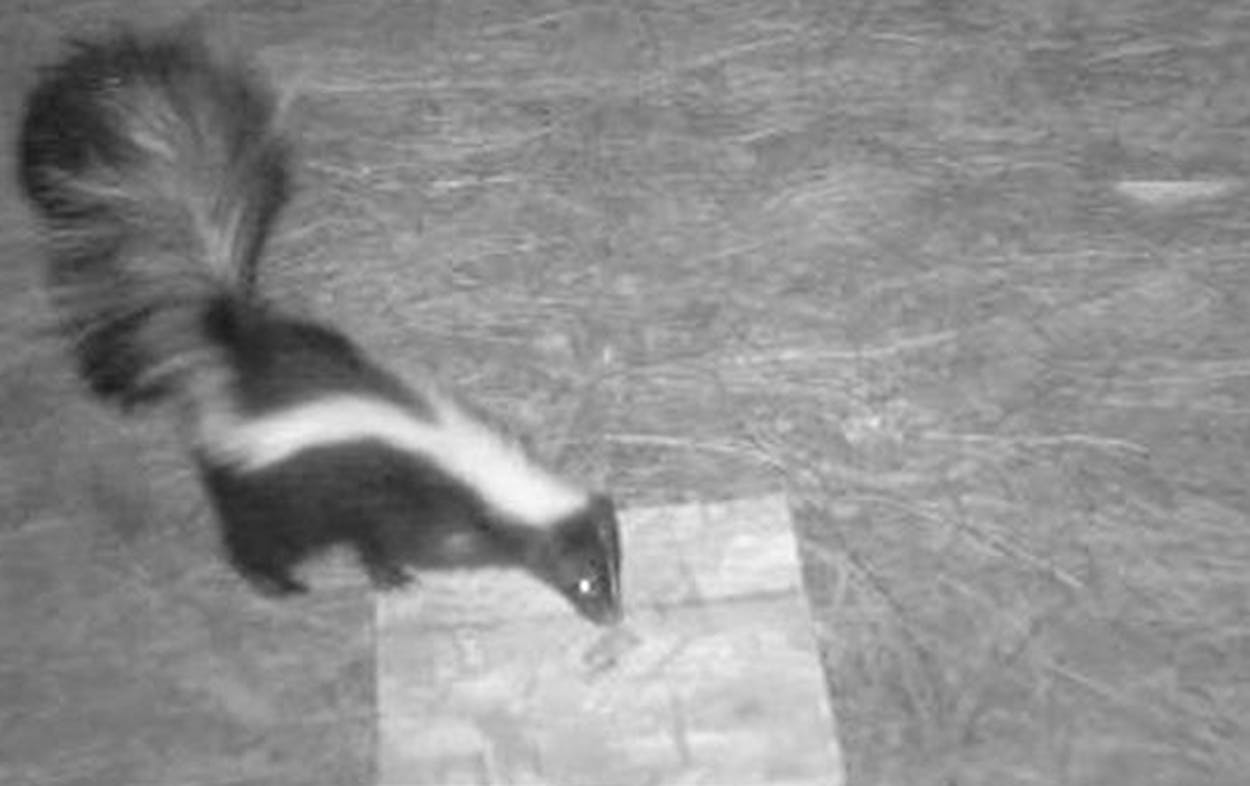There is another reason to avoid skunks, aside from their offensive scent: the small, stinky mammals accounted for the bulk of rabid mammals found in Texas in 2011, data shows.
“The drought made 2011 a bad year for wildlife in Texas. But it was a bountiful year for rabies, especially in Central Texas,” Brenda Bell wrote in the Austin American-Statesman. Mammals, finding their regular sources of water dried up, were pushed together at the remaining watering holes, Bell wrote. This proximity created optimal conditions for the virus to spread.
Skunks accounted for a full 566 of the 1,018 animals that tested positive for rabies in Texas in 2011. (Rabies was also found to have infected 304 bats, 37 raccoons, 31 foxes, thirty cats, 22 horses, ten cows, nine dogs, four goats, two deer, one bobcat, one coyote, and one alpaca.)
Bell noted that 2011 saw a thirty percent jump from 2010, when Texas led the nation in rabies cases. (Only 2008, 2002, and 2001 saw higher numbers of rabid animals.)
“Skunk rabies is our biggest problem and has been,” said Dr. Tom Sidwa, who oversees the state Health Department’s zoonosis control branch. “Everything that shows up now is either a skunk variant or bat variant.”
A team in Sidwa’s department wants to distribute an oral rabies vaccine to wild skunks, and are currently testing what flavor of bait skunks prefer, Bell reported. (The wild skunk pictured above is taste testing cheese as part of that study.)
Texas saw its last human rabies case in 2009 and its last fatal case in 2006, according to the Centers for Disease Control. (Readers may remember a horrifying story from June 2004 that sounds like the plot of a House episode: four people died that month in Texas and Oklahoma after receiving organ transplants and tissue from a man who died of rabies. The donor was an Texarkana man who lived in a bat-infested apartment building, and doctors had failed to recognize his true cause of death.)
So what are Texas’s most rabid counties? The following list is based on animal tissue samples that tested positive for rabies, according to the Texas Department of State Health Service’s Infections Disease Control Unit:
1. Williamson County – 135
2. Travis County – 59
3. Burnet County – 57
4. Hays County – 29
5. Llano County – 26
5. Erath County – 26
7. Denton County – 25
8. Harris County – 24
9. Bastrop County – 23
10. Fort Bend County – 20







